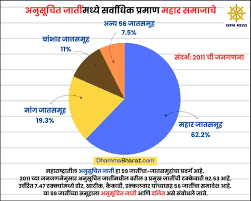.png)
A brutal incident on the railway line! 'T40 Bittu' tiger dies in train accident, a blow to wildlife conservation
Chandrapur, October 14, 2025 (Special Correspondent): A painful accident on the Ballarshah-Gondiya railway line in Chandrapur district of Maharashtra has torn the hearts of wildlife lovers. The death of the famous tiger 'T40 Bittu' was caused by a train collision, and this incident has come as a big blow to the campaign for wildlife conservation. The death of the tiger has angered environmentalists and local residents, and the demand for fixing the responsibility on the railways and the forest department is gaining momentum.
The incident took place on October 13 at around 6 pm. An express train running through the dense forest on the 123-kilometer stretch of the Ballarshah to Gondia railway line suddenly hit a tiger. Although the train driver tried to brake immediately, the accident could not be avoided due to speed. After the train stopped, local railway staff rushed to the spot and identified the tiger's body. The tiger was identified as 'T40 Bittu', who was one of the most famous and active tigers in the Chandrapur forest area in recent times.
The history of 'T40 Bittu' is very interesting and inspiring. The tiger was born in 2018 in the Tadoba-Andhari Tiger Reserve and was given the code name 'T40'. At the age of just three years, he was able to hunt alone and hundreds of chembrols (tiger hunts) in his area led to his being known as 'Bittu'. According to the forest department records, T40 had supported about 15 human attacks in the last two years, which earned him the nickname 'man-eater'. However, according to environmentalists, these attacks were due to human encroachment and lack of food reserves in the forest, and not due to the tiger's aggression.
Dr., Chief Conservator of Forests, Tadoba Tiger Reserve Expressing grief over the incident, Sanjay Parihar said, "T40 Bittu was a valuable asset in our project. His death is not limited to an accident, but is a symbol of the conflict between human development and wildlife. We will take steps to build underpasses and overbridges in consultation with the railway department." Dr. Parihar further noted that three tigers and two elephants have died in railway accidents in Chandrapur district last year, making the problem serious. Local villagers and wildlife activists have also strongly condemned the incident. Ramrao Patil, leader of the farmers' association in Ballarshah in Chandrapur district, said, "Such accidents have increased since the railway line passes through the forest. The government should take immediate measures, otherwise we will protest." "The number of tigers in the country is only 3,167, and such accidents are putting them at further risk," said Priya Deshmukh, coordinator of the Maharashtra branch of the wildlife conservation organization Wildlife Society of India. "Protection measures on the railway line under the central government's 'Project Tiger' should be implemented immediately."
The incident will have wide-ranging consequences for wildlife conservation. The Tadoba-Andhari Tiger Reserve is the largest tiger reserve in Maharashtra, home to more than 80 tigers. However, the tiger's habitat is being encroached upon by railways, highways and mining. According to a recent study, 12 wild animals have died on the Gondia-Ballarshah railway line in the last five years, most of which were tigers and chitals. Environment Minister Atul Sawant has also taken note of the matter and said, "We will set up a joint committee between the forest department and the railways. A fund of Rs 50 crore will be announced for tiger conservation."
This incident is not just a single tiger death, but an example of the conflict between human intervention and nature. Tigers are protected under the Wildlife Protection Act (1972) of the Government of India, and strict action can be taken against those responsible for their deaths. However, in this case, it is likely to be considered an accident. Wildlife enthusiasts are raising awareness on social media by starting the hashtag #SaveTadobaTigers.
This incident has once again forced us to think about how to strike a balance between development and conservation. Immediate and long-term measures are needed to save tigers like 'T40 Bittu'. Otherwise, precious forests like Tadoba will also fall prey to human greed.
Chandrapur, October 14, 2025 (Special Correspondent): A painful accident on the Ballarshah-Gondiya railway line in Chandrapur district of Maharashtra has torn the hearts of wildlife lovers. The death of the famous tiger 'T40 Bittu' was caused by a train collision, and this incident has come as a big blow to the campaign for wildlife conservation. The death of the tiger has angered environmentalists and local residents, and the demand for fixing the responsibility on the railways and the forest department is gaining momentum.
The incident took place on October 13 at around 6 pm. An express train running through the dense forest on the 123-kilometer stretch of the Ballarshah to Gondia railway line suddenly hit a tiger. Although the train driver tried to brake immediately, the accident could not be avoided due to speed. After the train stopped, local railway staff rushed to the spot and identified the tiger's body. The tiger was identified as 'T40 Bittu', who was one of the most famous and active tigers in the Chandrapur forest area in recent times.
The history of 'T40 Bittu' is very interesting and inspiring. The tiger was born in 2018 in the Tadoba-Andhari Tiger Reserve and was given the code name 'T40'. At the age of just three years, he was able to hunt alone and hundreds of chembrols (tiger hunts) in his area led to his being known as 'Bittu'. According to the forest department records, T40 had supported about 15 human attacks in the last two years, which earned him the nickname 'man-eater'. However, according to environmentalists, these attacks were due to human encroachment and lack of food reserves in the forest, and not due to the tiger's aggression.
Dr., Chief Conservator of Forests, Tadoba Tiger Reserve Expressing grief over the incident, Sanjay Parihar said, "T40 Bittu was a valuable asset in our project. His death is not limited to an accident, but is a symbol of the conflict between human development and wildlife. We will take steps to build underpasses and overbridges in consultation with the railway department." Dr. Parihar further noted that three tigers and two elephants have died in railway accidents in Chandrapur district last year, making the problem serious. Local villagers and wildlife activists have also strongly condemned the incident. Ramrao Patil, leader of the farmers' association in Ballarshah in Chandrapur district, said, "Such accidents have increased since the railway line passes through the forest. The government should take immediate measures, otherwise we will protest." "The number of tigers in the country is only 3,167, and such accidents are putting them at further risk," said Priya Deshmukh, coordinator of the Maharashtra branch of the wildlife conservation organization Wildlife Society of India. "Protection measures on the railway line under the central government's 'Project Tiger' should be implemented immediately."
The incident will have wide-ranging consequences for wildlife conservation. The Tadoba-Andhari Tiger Reserve is the largest tiger reserve in Maharashtra, home to more than 80 tigers. However, the tiger's habitat is being encroached upon by railways, highways and mining. According to a recent study, 12 wild animals have died on the Gondia-Ballarshah railway line in the last five years, most of which were tigers and chitals. Environment Minister Atul Sawant has also taken note of the matter and said, "We will set up a joint committee between the forest department and the railways. A fund of Rs 50 crore will be announced for tiger conservation."
This incident is not just a single tiger death, but an example of the conflict between human intervention and nature. Tigers are protected under the Wildlife Protection Act (1972) of the Government of India, and strict action can be taken against those responsible for their deaths. However, in this case, it is likely to be considered an accident. Wildlife enthusiasts are raising awareness on social media by starting the hashtag #SaveTadobaTigers.
This incident has once again forced us to think about how to strike a balance between development and conservation. Immediate and long-term measures are needed to save tigers like 'T40 Bittu'. Otherwise, precious forests like Tadoba will also fall prey to human greed.
The incident took place on October 13 at around 6 pm. An express train running through the dense forest on the 123-kilometer stretch of the Ballarshah to Gondia railway line suddenly hit a tiger. Although the train driver tried to brake immediately, the accident could not be avoided due to speed. After the train stopped, local railway staff rushed to the spot and identified the tiger's body. The tiger was identified as 'T40 Bittu', who was one of the most famous and active tigers in the Chandrapur forest area in recent times.
The history of 'T40 Bittu' is very interesting and inspiring. The tiger was born in 2018 in the Tadoba-Andhari Tiger Reserve and was given the code name 'T40'. At the age of just three years, he was able to hunt alone and hundreds of chembrols (tiger hunts) in his area led to his being known as 'Bittu'. According to the forest department records, T40 had supported about 15 human attacks in the last two years, which earned him the nickname 'man-eater'. However, according to environmentalists, these attacks were due to human encroachment and lack of food reserves in the forest, and not due to the tiger's aggression.
Dr., Chief Conservator of Forests, Tadoba Tiger Reserve Expressing grief over the incident, Sanjay Parihar said, "T40 Bittu was a valuable asset in our project. His death is not limited to an accident, but is a symbol of the conflict between human development and wildlife. We will take steps to build underpasses and overbridges in consultation with the railway department." Dr. Parihar further noted that three tigers and two elephants have died in railway accidents in Chandrapur district last year, making the problem serious. Local villagers and wildlife activists have also strongly condemned the incident. Ramrao Patil, leader of the farmers' association in Ballarshah in Chandrapur district, said, "Such accidents have increased since the railway line passes through the forest. The government should take immediate measures, otherwise we will protest." "The number of tigers in the country is only 3,167, and such accidents are putting them at further risk," said Priya Deshmukh, coordinator of the Maharashtra branch of the wildlife conservation organization Wildlife Society of India. "Protection measures on the railway line under the central government's 'Project Tiger' should be implemented immediately."
The incident will have wide-ranging consequences for wildlife conservation. The Tadoba-Andhari Tiger Reserve is the largest tiger reserve in Maharashtra, home to more than 80 tigers. However, the tiger's habitat is being encroached upon by railways, highways and mining. According to a recent study, 12 wild animals have died on the Gondia-Ballarshah railway line in the last five years, most of which were tigers and chitals. Environment Minister Atul Sawant has also taken note of the matter and said, "We will set up a joint committee between the forest department and the railways. A fund of Rs 50 crore will be announced for tiger conservation."
This incident is not just a single tiger death, but an example of the conflict between human intervention and nature. Tigers are protected under the Wildlife Protection Act (1972) of the Government of India, and strict action can be taken against those responsible for their deaths. However, in this case, it is likely to be considered an accident. Wildlife enthusiasts are raising awareness on social media by starting the hashtag #SaveTadobaTigers.
This incident has once again forced us to think about how to strike a balance between development and conservation. Immediate and long-term measures are needed to save tigers like 'T40 Bittu'. Otherwise, precious forests like Tadoba will also fall prey to human greed.

.jpg)







.png)

.png)





.jpeg)
